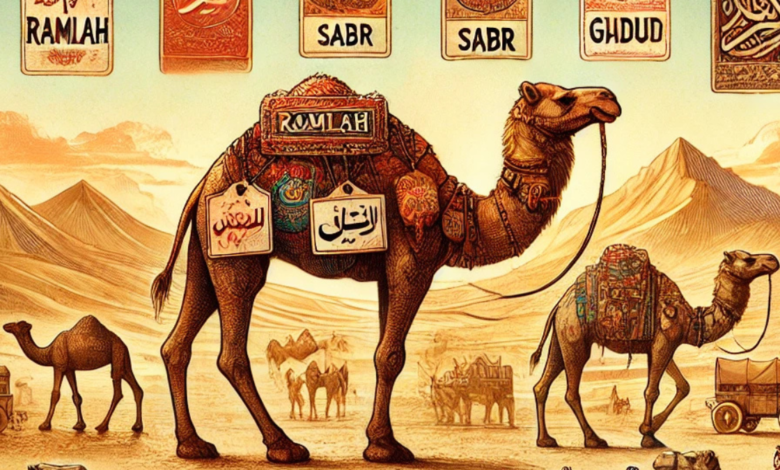The Meaning Behind Camel Names: Unveiling Desert Tales

camel names often called the “ships of the desert,” have played a vital role in people’s lives in arid regions for centuries. Beyond their utility as pack animals and sources of milk, meat, and wool, camels hold a profound cultural and spiritual significance in many societies. An often overlooked yet fascinating aspect of camel culture is their names. In many parts of the world, naming a camel is not merely a casual decision but a practice steeped in tradition, symbolism, and storytelling. This article explores the meanings behind camel names and the tales they tell about the rich heritage of desert communities.
The Cultural Importance of Camel Names
In desert societies, camels are more than just animals; they are companions, status symbols, and family extensions. As such, naming them expresses their unique traits, cultural significance, and the bond shared with their owners. Camel names often:
- Reflect Physical Characteristics: Names might describe the camel’s colour, size, or other distinguishing features. For example, a camel with a sandy coat might be called “Ramlah” (Arabic for sand).
- Highlight Personality Traits: Like pets in other cultures, camels are given names that reflect their temperament. A gentle and calm camel might be named “Haleem,” which means patient.
- Celebrate Strength and Endurance: Camels are admired for their resilience; names often pay homage to their strength. A sturdy camel could be called “Saif,” meaning sword, symbolizing its strength and reliability.
- Honour Historical or Mythological Figures: In some cultures, camels are named after legendary figures or heroes, imbuing them with pride and honour.
- Carry Spiritual Significance: Names can also have religious or spiritual meanings, acting as blessings for the camel and its owner.
Naming Traditions Across Different Cultures
- Arabian Peninsula
In the Arabian Peninsula, where camels are deeply intertwined with Bedouin culture, naming them is an art form. Bedouins often use descriptive names based on the camel’s physical traits or lineage. For instance:
- “Al-Dhahabi” means golden and is used for camels with a golden-brown coat.
- “Al-Abyad”: This means white for camels with pale coats.
- “Al-Saba” means morning breeze for a swift and elegant camel.
- Somalia and Ethiopia
In East Africa, where camels are crucial to pastoralist societies, names often reflect the environment or the camel’s role in the community. Examples include:
- “Guduud”: This means red for camels with reddish fur.
- “Waaberi”: Meaning dawn, symbolizing hope and renewal.
- India and Pakistan
In South Asia, camels are named based on their work ethic and connection to cultural festivals. Examples are:
- “Raja” means king for a majestic and hardworking camel.
- “Moti” Means pearl for a beloved and cherished camel.
- Australia
In Australia, where camels were introduced in the 19th century, naming is less traditional and often playful, reflecting Western naming styles. Examples include:
- “Outback”: Representing the camel’s adaptation to the harsh Australian desert.
- “Dusty”: For camels often seen trekking through dusty terrains.
Symbolism in Camel Names
Camel names often carry profound symbolism, serving as a bridge between the animal and the cultural identity of its owner. Some common themes include:
- Resilience: Names like “Sabr” (patience) or “Dawam” (perseverance) emphasize the camel’s ability to endure harsh conditions.
- Beauty: Names such as “Jamila” (beautiful) or “Husn” (grace) reflect admiration for the camel’s elegance.
- Nobility: Names like “Malik” (king) or “Amir” (prince) signify the high regard in which camels are held.
- Spirituality: Names such as “Baraka” (blessing) or “Noor” (light) highlight the sacred bond between humans and camels.
Modern Camel Naming Practices
While traditional naming conventions still thrive in many parts of the world, modern influences have introduced new trends. Camel owners now blend traditional names with contemporary inspirations, including names from popular culture, modern languages, and even global branding.
For example, a camel in a tourist attraction might be named “Sahara Star” to appeal to visitors, combining a traditional desert reference with a modern flair.
FAQs About Camel Names
- Why are camels given names?
Camels are given names to reflect their personality, appearance, and the cultural or spiritual significance they hold for their owners. Naming also strengthens the bond between the camel and its owner.
- How do camel names reflect their traits?
Camel names often describe physical attributes (e.g., colour, size) or personality traits (e.g., calm, strong). These names help owners and communities identify and celebrate each camel’s uniqueness.
- Are there specific traditions for naming camels?
Yes, naming traditions vary by culture. In Arabian, African, and South Asian societies, names often carry deep symbolic meanings related to lineage, environment, or mythology.
- Do modern camel names differ from traditional ones?
Modern camel names sometimes incorporate contemporary influences, such as pop culture or tourist appeal, while traditional names focus on cultural heritage and symbolism.
- What are some popular camel names across the world?
Popular camel names include “Ramlah” (sand), “Sabr” (patience), “Guduud” (red), “Outback,” and “Dusty,” each reflecting the camel’s traits and the cultural context.
Conclusion
Camel names are more than mere labels; they are expressions of cultural pride, spiritual connections, and personal relationships. From the windswept deserts of Arabia to the sunburnt plains of Australia, these names tell tales of resilience, beauty, and tradition. Whether rooted in ancient lore or modern creativity, camel names testify to the enduring bond between humans and these remarkable creatures.
You May Also Read: https://usacitiesnews.com/car-accident-jokes/





